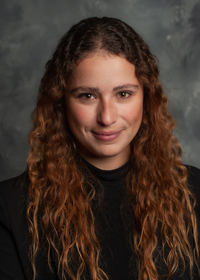Information Possibly Outdated
The information presented on this page was originally released on August 20, 2001. It may not be outdated, but please search our site for more current information. If you plan to quote or reference this information in a publication, please check with the Extension specialist or author before proceeding.
Program helps dairy farmers learn futures
MISSISSIPPI STATE -- Some state dairy producers have been given the opportunity to manage risk through cost share participation in the milk futures market.
Walthall County dairy farmers have a unique opportunity to enter the dairy futures market at reduced costs through the U.S. Department of Agriculture's Dairy Options Pilot Program. DOPP pays 80 percent of the premium and part of the brokerage fees for qualified participants who buy "put options" in the milk futures market. Put options are bought to establish or lock in the minimum price a producer will receive for milk at a selected future date.
Lamar Adams, Walthall County agent with Mississippi State University's Extension Service, said eight of the county's 62 dairy producers have been trained in dairy futures marketing. More training will be done in the next few weeks.
"Producer prices for milk are extremely volatile and follow a seasonal pattern," Adams said. "Over the last few years, we've seen some pretty severe increases and decreases, so anything a dairy farmer can do to try to ensure stability in milk income should be a benefit."
One way to introduce price stability is through put options on milk futures contracts.
"The intent is not to guarantee a higher price for that milk but to buy an insurance policy against falling milk prices," Adams said. "You pay a premium to guarantee a minimum price."
Put options are offered on Class III milk, used primarily for cheese, and Class IV, used primarily for butter and milk powder. By locking in a minimum price, put options protect producers from downward price movements, but allow producers to sell at higher prices with no penalty if prices increase.
Bill Herndon, Extension agricultural economist, said put options are available in 25 cent increments, and option contracts can be bought in either 100,000 or 200,000 pound units. Premium fees fluctuate moment to moment, as does the futures price and the cash price. Dairy producers must consider these and other factors when deciding whether to buy a put option and at what price.
For example, to use a put option price of $15.50 on Class III milk for September, producers must first estimate the basis, which is defined as the difference between what they expect the cash and futures prices to be at a particular time. If the basis is $1.50, add this to the $15.50 desired price for a total of $17.
Then subtract September's premium of 38 cents a hundredweight, bringing the locked in price to $16.62, which is the minimum price the producer locks in with this put option example. Premium fees on a 100,000 pound contract under this scenario are $380 and brokerage fees usually are about $50 in Mississippi.
"DOPP pays 80 percent of the premium and a maximum of $30 in brokerage fees," Herndon said. "In this example, USDA would pay $334 and the farmer would pay $96 to assure a minimum milk sale price in September of $16.62 a hundredweight."
The DOPP program will cost share a maximum of either 600,000 of pounds of milk per producer or the producer's selected six consecutive months of production, whichever is less. Producers can still deal in the futures market after reaching the cap, but without cost share assistance from the USDA.
Herndon said USDA is offering the program through its Risk Management Agency as an educational outreach for dairy producers on price risk management. Milk futures are available on the Chicago Mercantile Exchange and were first offered in 1995.
"DOPP is a demonstration program to get farmers introduced to the milk futures market," Herndon said. "It helps defray most of the cost of getting acquainted with this risk management alternative."
To take part in DOPP, dairy farmers must first be located within a participating county. Walthall County was the only county placed in the program in December, and Adams said USDA expects to add more Mississippi counties next year.
Currently, the program last for one year, but Adams said he expects it to be extended.
"Farmers have been marketing grain and other crops for years in the futures market, but until recently, there was no futures market for dairy products," Adams said. "Since it's relatively new, most dairy producers haven't forward marketed any products, so USDA is offering this program to introduce them to this risk management tool."


